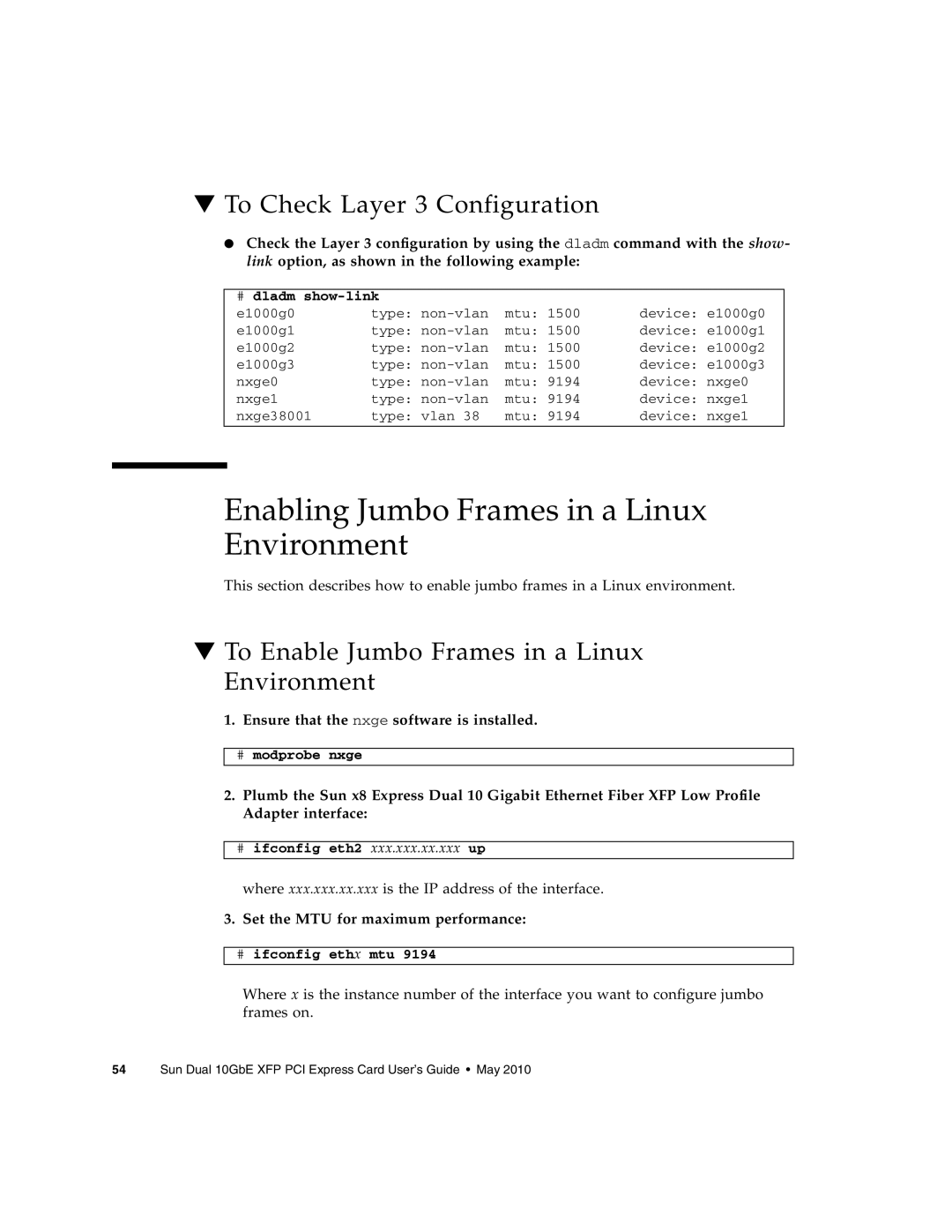
▼To Check Layer 3 Configuration
●Check the Layer 3 configuration by using the dladm command with the show- link option, as shown in the following example:
| # dladm |
|
| |
| e1000g0 | type: | mtu: 1500 | device: e1000g0 |
| e1000g1 | type: | mtu: 1500 | device: e1000g1 |
| e1000g2 | type: | mtu: 1500 | device: e1000g2 |
| e1000g3 | type: | mtu: 1500 | device: e1000g3 |
| nxge0 | type: | mtu: 9194 | device: nxge0 |
| nxge1 | type: | mtu: 9194 | device: nxge1 |
| nxge38001 | type: vlan 38 | mtu: 9194 | device: nxge1 |
|
|
|
|
|
|
|
|
|
|
|
|
|
|
|
Enabling Jumbo Frames in a Linux
Environment
This section describes how to enable jumbo frames in a Linux environment.
▼To Enable Jumbo Frames in a Linux Environment
1.Ensure that the nxge software is installed.
#modprobe nxge
2.Plumb the Sun x8 Express Dual 10 Gigabit Ethernet Fiber XFP Low Profile Adapter interface:
#ifconfig eth2 xxx.xxx.xx.xxx up
where xxx.xxx.xx.xxx is the IP address of the interface.
3.Set the MTU for maximum performance:
#ifconfig ethx mtu 9194
Where x is the instance number of the interface you want to configure jumbo frames on.
